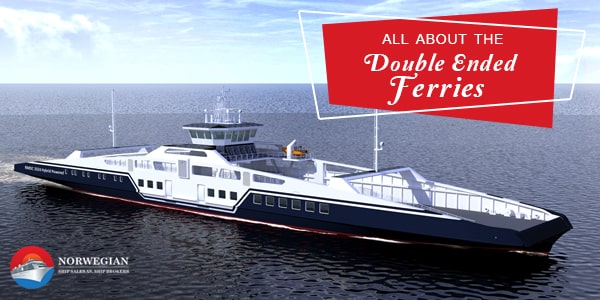Given the profound impact of ferries on society, it comes as no surprise that naval architects find the topic of huge interests. The economic aspect of the ferry has made it the focus of research among naval architects. There are numerous islands, peninsulas, rivers, and lakes in the Pacific Northwest region of the US. The fresh water and salt water transportation routes have become a critical component in the economic development of the region, from the early days, and which is continuing till today. Right from the early settlers in the 1850s, people have been using power-driven ferries, as this mode of transportation helped link the different communities through goods and people.
A ferry is a watercraft that carries people, cargo, and vehicles across a river or strait. In a double-ended ferry, vehicles are both loaded and off-loaded on both ends of the watercraft, and when the direction of travel changes, the bow becomes the stern. The double-ended ferry comes to best use when the route is short, like a river crossing. The time it takes in to maneuver the vessel and bring it back into the dock takes up a considerable portion of the total time between departures. And with increased maneuvering time, there is increased consumption of fuel, and the chance, however small, of maneuver going awry. This could be avoided with a double-ended ferry.
There is another advantage with the double-ended ferry – every time it enters and departs a terminal, the handling characteristics remain the same. And with the presence of propulsion at each end, there is excellent stopping power and maneuverability of the watercraft, more so, if a cycloidal or an azimuthing propulsion system is used. All these features improve the safety considerations.
The double-ended ferry comes with various types of propulsion configurations. In early time, these included steam-driven, paddle wheels, cable ferry, etc. In recent times, one finds diesel engine is being used as the main power source, with the power being put into the water using various means. Clearly, no preferred approach exists that is suitable for every type of ferry. Nowadays, machinery configuration is so designed that it meets the performance requirements of the owner while keeping a balance between maintainability, reliability, operability, and fuel efficiency. This requires a study of propulsion, keeping the owner’s requirements, to bring out weighting criteria for the different aspects of the propulsion system. Typically, the owner has their own opinion on the right equipment and configuration needed for their operation.
An increasing number of clients are showing interest in various types of propulsion that would help in lowering the overall energy consumption, and thus, reduce environmental pollution. Now owners are willing to replace the traditional geared diesel propulsion with hybrid propulsion with batteries for energy storage, electric drives, and smart control systems to reduce energy consumption. There is also an increased preference for alternative fuels like biofuels, liquefied natural gas, and even hydrogen.
The Boom
Double-ended ferries are widely used in most of the fjords and coastal areas of Norway; and it is same with the few in Canada, British Columbia, and Sydney, Australia.
Some of the popular names in double-ended ferry services are:
- Washington State Ferries
- Start Ferry
- Staten Island Ferry
With over 40 years of shipping experience, Norwegian Ship Sale is now a reliable name in Double Ended Ferries for Sale, and also the sale of cruise vessels and ships, and ferries.


